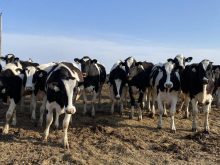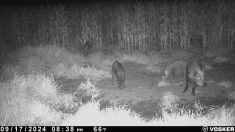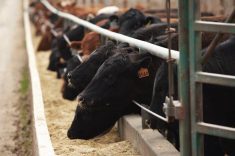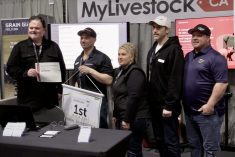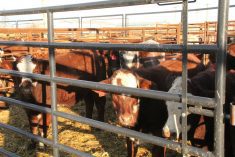As predicted, fed slaughter graded volume decreased in 2013. But what is interesting is the non-fed graded volume increased (non-fed being mostly cows) to compensate for the fed slaughter decrease.
This increase of non-fed slaughter does not bode well for the future as it means there are going to be fewer breeding cows in the national herd. No amount of heifer retention in the near future can make up for the reduction in the size of the cow herd that has recently occurred. It will take time to rebuild the number of breeding animals. The Canadian Beef Grading Agency (CBGA) will have to manage its budget closely to avoid operating at a deficit as a result of further reduced grading volumes in 2014.
Read Also

Smart deworming for sheep starts with individual fecal egg counts
Fecal egg count tests are one step to managing dewormer resistance and managing sheep parasites on Canadian sheep farms to maintain flock health.
There were no changes to the delivery of grading in 2013, either regulatory or technological. JBS Foods Canada in Brooks continues to be the only plant in Canada using technology to facilitate official grade assessment. The Canadian regulated yield grades remain at three without any indication that there will be an official regulatory adjustment to the five U.S. yield classes.
However, hope for more flexible, responsive grade standards remains intact.
Thanks to funding from the Agriculture Council of Saskatchewan and the Canadian Agricultural Adaptation Program, the CBGA has been able to continue efforts to modernize the Canadian Carcass Grading Regulations. Ongoing consultation with industry and the CFIA has produced positive industry and government buy-in into the concept of an industry-managed grade standard. Unfortunately progress is coming at a snail’s pace.
The CFIA was scheduled to have a paper on the Incorporation by Reference of documents in the new Food Safety Act by November 2013, but this document has not been officially circulated at the time of writing.
From the Canadian Cattlemen website: Beef demand looking forward
The proposal from industry via the CBGA is that a new Livestock Standards Authority be established by industry to review and maintain the Canadian Carcass Grade Standards as a document “incorporated by reference.” This would provide enforcement, credibility, and responsiveness to industry developments in science, technology, and markets — as opposed to a government standards document that would require regulatory reform, which is a very time-consuming process.
The new timelines for modernization of the regulations by CFIA include a spring 2014 deadline for the first publication of modernized regulations, followed by a comment period throughout the summer and fall of 2014, and then a final publication in the spring of 2015.
Behind the scenes, thanks to funding and support from Alberta Livestock and Meat Agency Strategic Initiatives and Beef Cattle Research Council, the project for “Measuring the Canadian Beef Advantage” continues. Carcasses are moving through the testing protocol to determine whether or not dual X-ray technology can predict carcass yield without the costly process of dissection to lean, fat, and bone. Initial results look promising, but science requires thorough and conclusive evidence of the value of this process before releasing results. The project will conclude in 2015.
No update on beef carcass grading would be complete without some mention of the U.S. country-of-origin labelling (COOL) law. Despite the loss of competitive bids from U.S. packers, the CBGA looks upon COOL as an opportunity to slaughter and grade more beef in Canada. With three Canadian packing plants of medium size scheduled to reopen in 2014, the retention of these slaughter cattle could have an influence on their viability.
The views and opinions expressed in this article are those of the author and don’t necessarily reflect the official policy or position of the Canadian Beef Grading Agency.






